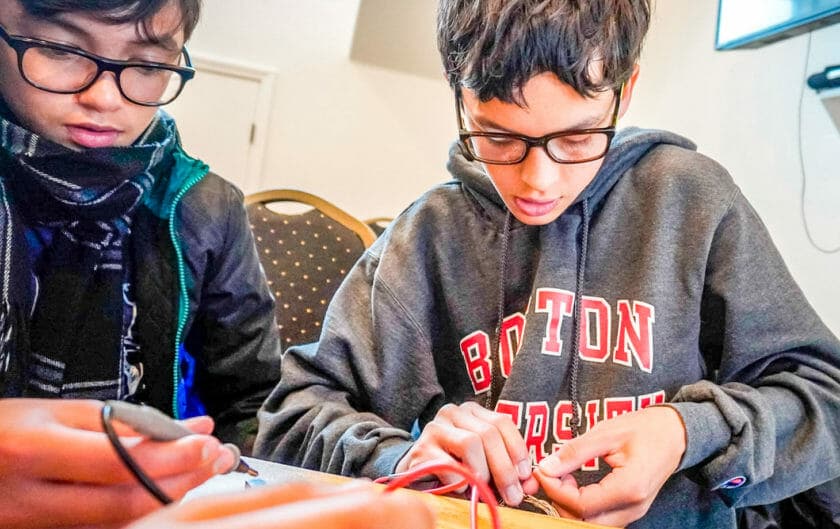Our junior engineers discuss how to harness natural resources to power machines, then design and build a wind turbine to supply an electromagnetic dynamo with mechanical energy to be converted into electrical energy. Students will see how much electrical energy their design produces and make modifications to increase its energy output. This class focuses around reducing human impact as it pertains to energy consumption.
What’s Covered
After learning about different types of energy and their sources, students use this knowledge to fuel a discussion and potential debate on the choices humans have for energy consumption. They consider ways that one form of energy can be converted into another and see this in action using a radiometer and solar powered cars.
After testing out a couple examples of electromagnetic dynamos, which convert mechanical energy into electrical energy, students put their engineering and problem-solving skills to the test to design a wind turbine that harvests wind power for an electromagnetic dynamo.
Lessons & Activities
Students participate in a discussion of Human Impact in Energy Consumption, as well as the activities listed below.
Radiometer & Solar Cars Demo
Electromagnetic Dynamo Demo
Wind Turbine Build
Educational Standards
Applicable Common Core/Next Generation Standards:
- NGSS-MS-ESS3-3: Apply scientific principles to design a method for monitoring and minimizing a human impact on the environment.
- NGSS-MS-ESS3- 4: Construct an argument supported by evidence for how increases in human population and per capita consumption of natural resources impact Earth’s systems.
- NGSS-MS-ESS3-1: Construct a scientific explanation based on evidence for how the uneven distribution of Earth’s mineral, energy, and groundwater resources are the results of past and current geoscience processes.
- NGSS 4-ESS3-1: Obtain and combine information to describe that energy and fuels are derived from natural resources and their uses affect the environment.
Ready to Get Started?
Accelerate your students’ learning with our exciting curriculum. Learn more about this hands-on, experiential education activity today.
